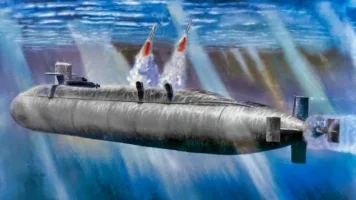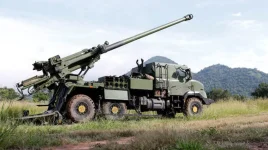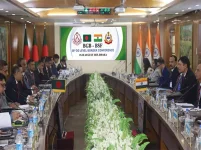- Views: 6K
- Replies: 63
The Indian Air Force (IAF) is facing mounting pressure from the United States to select either Lockheed Martin's F-21 or Boeing's F-15EX fighter jet for its Multi-Role Fighter Aircraft (MRFA) competition.
This pressure comes amidst ongoing trade negotiations between the two countries, with the US implying concessions in exchange for an Indian purchase of American fighters.
However, the IAF has reservations about both aircraft due to concerns about their technological capabilities in the face of growing regional threats.
Both the F-21 and F-15EX, while modernized versions of older designs, lack the advanced stealth capabilities of fifth-generation fighter jets such as China's J-20 and J-35A.
With Pakistan potentially acquiring these Chinese stealth fighters, India is hesitant to invest in aircraft that could be outmatched technologically.
This concern is further compounded by the potential operational limitations imposed by the US on the sale of the F-35A, a more advanced stealth fighter.
The US Department of Defence has expressed a willingness to sell the F-35A to India, but with strict conditions regarding operational oversight and maintenance.
These conditions, which include regular inspections of Indian airbases and access to monitor the jets' usage, are seen by India as an infringement on its operational sovereignty.
Furthermore, Lockheed Martin's reluctance to establish an F-35 production line in India for a relatively small order of 110 jets adds another layer of complexity to the negotiations.
The IAF's MRFA tender specifically seeks a medium-weight fighter, making the heavy-category F-15EX a less attractive option. While the F-15EX is generally viewed more favorably within the IAF than the F-21, acquiring another heavy fighter like the Su-30MKI does not align with the IAF's current operational needs and strategy.
The IAF's preference remains for a medium-weight fighter that offers a balance of capabilities, cost-effectiveness, and logistical feasibility.
The IAF's reluctance to be swayed by political pressure in its selection of fighter jets demonstrates India's commitment to strategic autonomy in defence procurement. The Indian defence establishment remains wary of acquiring aircraft with restrictive operational oversight requirements.
Furthermore, investing in older-generation fighters while adversaries are deploying cutting-edge stealth platforms would put India at a disadvantage in future aerial engagements.
Despite US pressure, India remains steadfast in its requirements for the MRFA tender. The decision on which fighter jet to procure will be based on India's long-term strategic interests and operational needs, not on short-term diplomatic gains.
Unless the US offers a deal that includes more advanced platforms like the F-35A under acceptable terms, India is unlikely to favor American jets over other contenders in the MRFA competition. This situation highlights India's determination to maintain operational sovereignty while modernizing its air force with technologically superior platforms.



